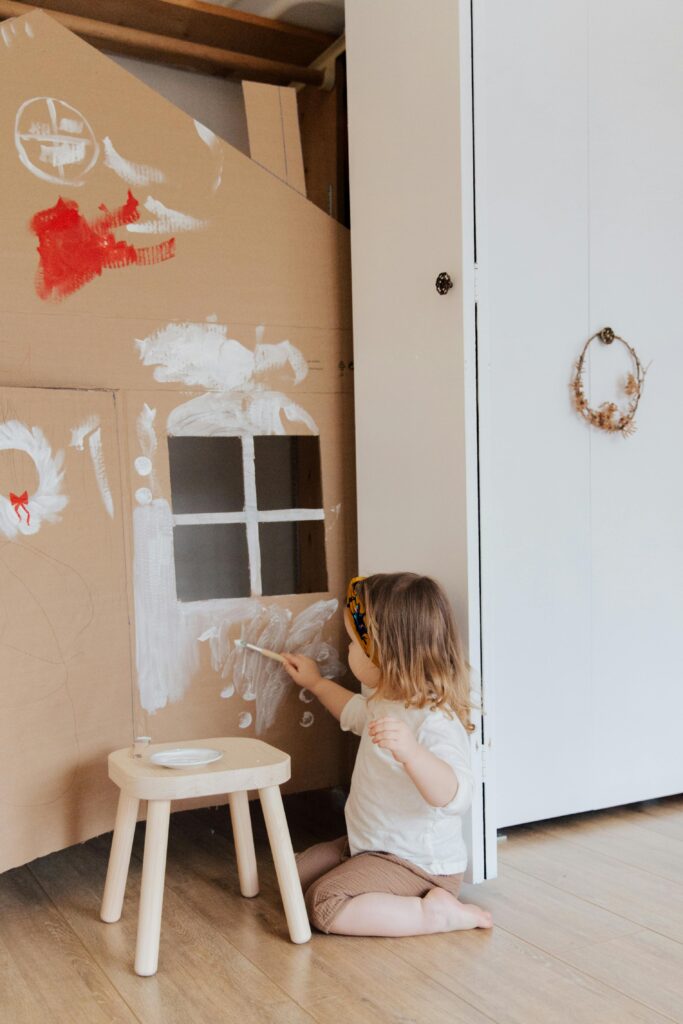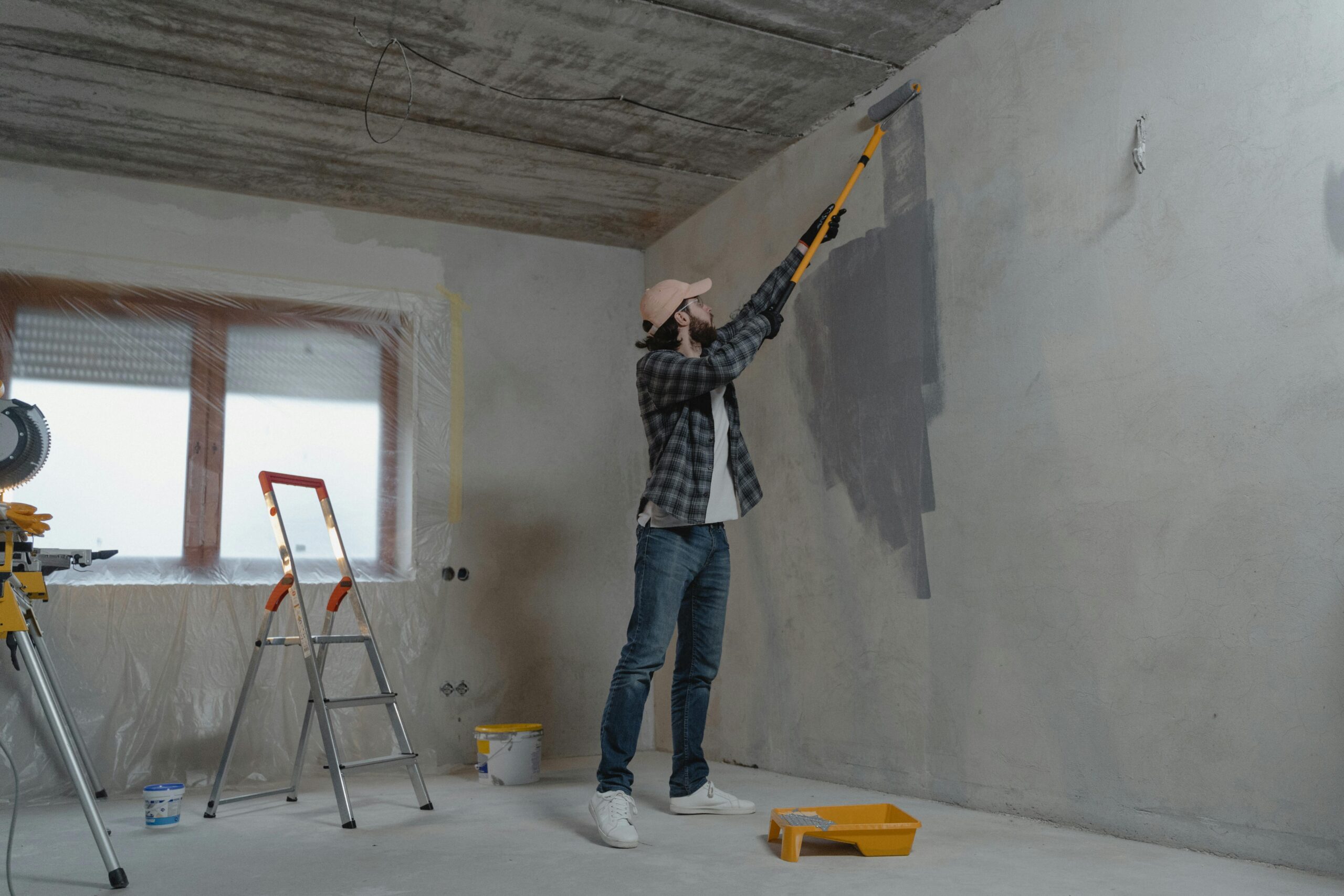
Did you know that a fresh coat of exterior paint can boost your home’s value by up to 10%? It’s not just about aesthetics; the right paint protects your home from the elements and improves its overall lifespan. While you might think choosing colors is the most daunting task, the preparation and process are equally crucial for achieving a professional finish. So, what steps do you need to take to ensure your exterior painting project is successful?
Key Takeaways
- Exterior painting enhances your property’s aesthetic, increasing curb appeal and value while reflecting your personal style.
- Choosing high-quality, durable paint ensures resistance to weather elements and long-lasting protection for your home.
- Proper surface preparation, including cleaning and repairing, is crucial for achieving a successful paint application and preventing issues like peeling.
- Selecting the right colors involves considering neighborhood aesthetics and architectural styles to create a harmonious look.
- Using appropriate tools and techniques, such as brushes and rollers, ensures even coverage and a professional finish.
Importance of Exterior Painting
When you think about enhancing your home’s appeal, exterior painting often takes center stage. It’s one of the most effective ways to boost your property’s aesthetic and create a welcoming atmosphere. A fresh coat of paint can transform your home’s look, making it stand out in your neighborhood and increasing its overall value.
Moreover, exterior painting protects your home from the elements. Weather conditions like rain, sun, and wind can wear down your exterior surfaces, leading to damage over time. A quality paint job acts as a barrier, preventing moisture intrusion and decay, and safeguarding your investment.
Additionally, exterior painting allows you to express your style and personality. Whether you prefer bold colors or muted tones, the right choice can reflect your taste and enhance your home’s character. It’s not just about looks; it’s also an opportunity to align your home with your vision.
Lastly, regular maintenance through painting can help you identify underlying issues early, like rot or pest infestations. This proactive approach can save you money and hassle in the long run.
Choosing the Right Paint
Choosing the right paint is crucial for achieving a lasting and visually appealing finish on your home’s exterior. You want to select a paint that withstands the elements while enhancing your home’s curb appeal.
Here are some key factors to consider:
- Durability: Opt for high-quality paints that resist fading, cracking, and peeling.
- Finish: Decide on a finish that complements your home’s style—matte, satin, or gloss can each create a different look.
- Color: Choose colors that harmonize with your neighborhood and reflect your personal taste.
- Type: Consider the type of paint, like latex or oil-based, depending on your surface and environmental conditions.
- Eco-friendliness: Look for low-VOC or no-VOC paints that are better for the environment and your health.
Preparing Your Exterior
Before you dive into painting, it’s essential to get your exterior ready. Proper preparation can make a significant difference in the quality and longevity of your paint job. Start by inspecting the surface for any damage, such as cracks, peeling paint, or mold. Fix these issues before applying any new paint.
Next, clean the exterior thoroughly. You can use a pressure washer or a scrub brush with soapy water to remove dirt and grime. Once the surface is clean, allow it to dry completely.
You should also consider the weather conditions. Aim for a dry day with moderate temperatures, as extreme heat or cold can hinder the paint’s adhesion.
To help you organize your preparation steps, here’s a quick reference table:
| Task | Importance | Tips |
|---|---|---|
| Inspect Surface | Ensures long-lasting paint | Check for damage |
| Clean the Exterior | Promotes adhesion | Use pressure washer |
| Fix Damages | Prevents further issues | Fill cracks properly |
| Monitor Weather | Optimal conditions | Avoid humidity and cold |
With these steps, you’re well on your way to a successful exterior painting project!
Essential Tools and Materials

Having prepared your exterior, it’s time to gather the right tools and materials for a successful painting job.
Having the right equipment not only makes the process smoother but also ensures a professional-looking finish.
Here’s what you’ll need to get started:
- High-quality exterior paint: Choose a durable, weather-resistant paint suitable for your surface type.
- Paint brushes and rollers: Get a variety of sizes; brushes for detailed areas and rollers for larger surfaces.
- Drop cloths: Protect your landscaping and surfaces from splatters and spills.
- Painter’s tape: Use this to create clean lines around windows, doors, and trim.
- Ladder: Ensure you have a stable ladder to reach those high spots safely.
With these essential tools and materials in hand, you’ll be well-prepared to tackle your exterior painting project.
Remember, investing in quality supplies can make a huge difference in the outcome of your work, so don’t skimp on these items.
Once you’ve gathered everything you need, you’ll be ready to move on to the next steps in the painting process!
Step-by-Step Painting Process
Now that you’ve got your tools and materials ready, it’s time to focus on the step-by-step painting process.
You’ll start by preparing the surface, which is crucial for a smooth finish.
From there, choosing the right paint and mastering application techniques will make all the difference in your project.
Preparing the Surface
Preparing the surface is crucial for achieving a smooth and long-lasting finish in your exterior painting project. If you skip this step, you might end up with peeling paint or unsightly blemishes.
Here’s how to get started:
- Clean the surface: Remove dirt, grime, and mildew using a pressure washer or a scrub brush with soap and water.
- Scrape off old paint: Use a putty knife to remove any loose or flaking paint. This helps create a stable base for your new paint.
- Sand the surface: Smooth out rough spots and edges with sandpaper. This ensures better adhesion of the new paint.
- Fill in holes and cracks: Use a quality filler or caulk to repair any damaged areas. Make sure to sand the filler down to make it level with the surface.
- Prime if necessary: If you’re working with bare wood or a surface that’s been repaired, applying a primer will help protect and enhance the final coat.
Choosing the Right Paint
Choosing the right paint is essential for ensuring your exterior project not only looks good but also withstands the elements over time.
Start by considering the type of paint: latex or oil-based. Latex paints are popular for their quick drying time and easy cleanup, while oil-based paints offer durability and a smooth finish.
Next, think about the finish. Flat or matte finishes hide imperfections well but don’t hold up to weather as effectively as satin or semi-gloss finishes, which are more resistant to moisture and easier to clean.
Don’t forget about color. Lighter colors reflect sunlight and stay cooler, while darker shades absorb heat, which can lead to faster fading.
Also, consider the environmental factors specific to your location. If you live in a humid area, choose a paint designed for moisture resistance.
Application Techniques Explained
While it might seem straightforward, applying exterior paint requires careful attention to detail to ensure a long-lasting finish.
Start by gathering your materials, including high-quality brushes, rollers, and drop cloths. Here’s a step-by-step guide to help you through the process:
- Prep the Surface: Clean the area thoroughly, removing dirt, mildew, and peeling paint. This ensures good adhesion.
- Prime if Necessary: If you’re painting a porous surface or making a significant color change, apply a primer first.
- Choose the Right Technique: Depending on the surface, you can use brushing, rolling, or spraying. Each technique has its advantages.
- Start with Edges: Use a brush to cut in around windows, doors, and corners. This provides a clean transition for the roller.
- Roller Application: For larger areas, dip your roller in paint, remove excess, and apply in a zigzag motion, followed by a vertical stroke for even coverage.
Common Painting Mistakes
When tackling exterior painting, it’s easy to make mistakes that can lead to disappointing results. One common error is skipping surface preparation. Failing to clean and repair the surface can cause paint to peel or flake off sooner than you’d like. Make sure to power wash and fill in any cracks or holes before you start.
Another mistake is choosing the wrong paint. Not all paints are suitable for exterior use, so be sure to select a high-quality, weather-resistant option. Additionally, many people underestimate the importance of primer. Skipping this step can result in uneven color and reduced durability.
Using the wrong tools can also impact your project. Avoid cheap brushes and rollers that can leave streaks or fibers in your finish. Instead, invest in quality equipment tailored for exterior work.
Lastly, don’t forget to mind the weather. Painting in direct sunlight or during high humidity can lead to problems like bubbling or uneven drying. Plan your project around ideal conditions for the best outcome.
Trends in Exterior Colors
After you’ve avoided common painting mistakes, it’s time to think about the colors that will enhance your home’s exterior. The right color can transform your space, adding curb appeal and reflecting your personal style.
Here are some current trends in exterior colors you might want to consider:
- Soft Pastels: Gentle shades like mint green or blush pink create a welcoming vibe.
- Bold Dark Colors: Deep navy or charcoal can add drama and sophistication.
- Earthy Tones: Warm browns and muted greens blend beautifully with nature.
- Two-Tone Combinations: Pairing a main color with a contrasting trim offers a modern twist.
- Classic Whites and Grays: Timeless and versatile, these shades provide a clean look.
When choosing your colors, think about your neighborhood and the architectural style of your home. You want your house to stand out, but not clash with others.
Don’t forget to test samples on your walls before committing—lighting can dramatically affect how a color looks.
Frequently Asked Questions
How Often Should I Repaint My Home’s Exterior?
You should consider repainting every five to seven years, depending on your location and climate. Inspect your home regularly for signs of wear, and don’t hesitate to refresh the paint when necessary.
Can I Paint My House in Winter or Rainy Weather?
You can paint in winter or rainy weather, but it’s risky. The temperature and humidity can affect drying and adhesion. If you choose to proceed, make sure to use paints designed for such conditions.
What Safety Precautions Should I Take While Painting Outside?
As you embark on your painting journey, think of it like a knight donning armor. Wear gloves, goggles, and a mask; secure ladders, and check for weather changes to ensure your quest remains safe and successful.
How Do I Choose a Professional Exterior Painter?
To choose a professional painter, you should research local options, read reviews, and ask for recommendations. Check their credentials and portfolios, and don’t forget to get detailed quotes to compare services and prices.
What Should I Do if I Find Lead Paint?
If you find lead paint, don’t panic. You should stop any work immediately, seal the area, and consult a professional. They’ll assess the situation and guide you on safe removal or containment options.
Conclusion
In wrapping up your exterior painting project, remember that a fresh coat isn’t just about a splash of color; it’s a gentle embrace for your home against the elements. By choosing the right hues and following proper prep steps, you’re not only enhancing curb appeal but also nurturing your property’s value and spirit. So, roll up your sleeves, enjoy the process, and let your home shine with a renewed sense of pride and protection.